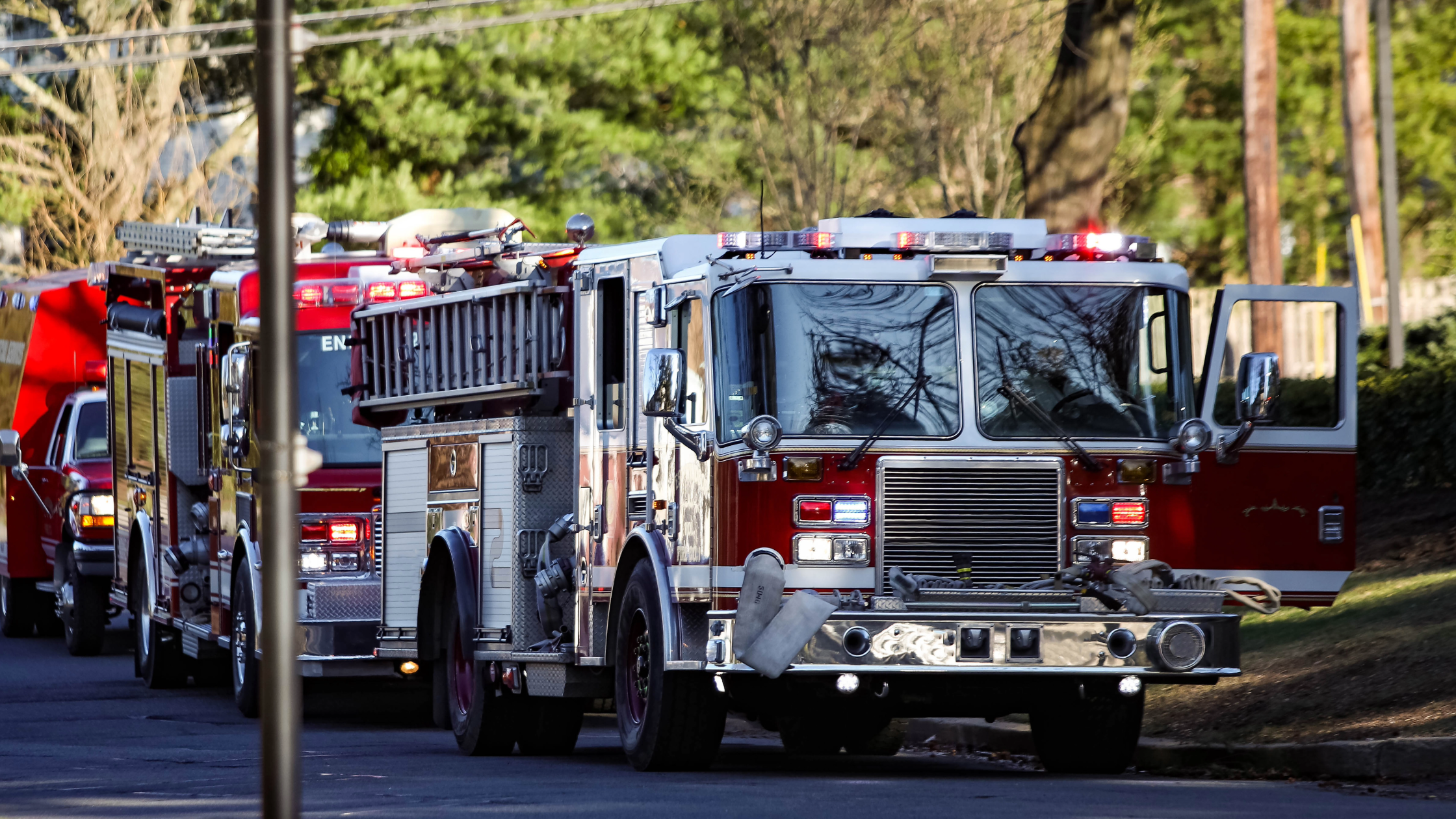Let’s face it. This isn’t your grandparents’ emergency service organization.
You’re doing more frequent and varied responses than ever before. Fires ignite faster, burn hotter and contain even more toxins. Costs of equipment and apparatus are rising. Funds are dwindling. Volunteer personnel are more difficult to find. Public demands and expectations can be overwhelming. Possible longterm reputational damage due to one member’s actions is daunting. And, in many cases, your Chief is faced with the insurmountable task of managing it all.
Can any one individual do it all and do it well? Probably not. But you don’t have to.
VFIS has your back.
As a VFIS client, you get more than an insurance policy. We’re also here to serve as a helpful partner and training arm to your organization by providing you with a variety of industry-specialized resources, educational programs and training classes that are designed to help you educate, train and retain your personnel, develop comprehensive risk management programs and, ultimately, stay better protected while you serve and protect others.
The current landscape calls for ESOs to actively focus on safety and risk management—and we’re here to help you answer that call.
Here’s an overview of our online and in-person learning opportunities, the majority of which are completely free for VFIS clients, to help you lead your team, address everyday risks, overcome unique challenges and expand your skillsets.
RESOURCE LIBRARIES
- VFIS.com has 300+ online tools, self-assessments and shareable resources covering best practices for general operations, vehicle operations, personnel management, property management, wellness, cybersecurity and more.
- ResponderHelp.com, developed and administered by VFIS, houses 5,000+ resources (including free SOGs) that have been developed by a variety of industry specialists, including the USFA, NVFC, NFFF and more, to help you tackle your top concerns.
- The Don’t Risk It! Podcast series, available on all major podcast platforms and at vfis.com/podcast, shares 100+ meaningful and helpful conversations about emergency services industry trends, best practices and risk management.
VFIS UNIVERSITY
Our distance learning platform, available at vfisu.com, gives you 24/7, 365 access to quality online training courses (many of which are recognized as meeting industry standards) that you can assign to your team members and they’ll receive certificates upon completion. Some course topics include annual refresher training, behavioral health, wellness, vehicle operations, administration and more.
EDUCATIONAL PROGRAMS
Browse our educational USBs, videos and products at shop.vfis.com—all of which are designed to help you host trainings and increase awareness about important risks at your own station, including patient handling, vehicle operations and abuse prevention.
FIELD TRAINING CLASSES
We conduct a variety of in-person training classes on a regional basis throughout the year, many of which are offered at instructor (“train the trainer”) and participant (“student”) levels, including Emergency Vehicle Driver Training (EVDT) + EMS Vehicle Operations (EMSVO), Trailer Operations and Safety, UTV/ATV Safety, Traffic Incident Management and more. Visit vfis.com to check out a live calendar of upcoming trainings + see if we’re coming to a city near you!
Exclusive announcement: new EVDT program coming soon!
Did you know that VFIS developed the first-ever Emergency Vehicle Driver Training (EVDT) program in 1976 We’re just as proud that it soon became the gold-standard for training in the industry—and has a remained a leading program and top priority for our team.
We’re honored that this program has aided in saving countless lives—and excited to exclusively share with you that we’re releasing an updated version of it later this year in hopes of continuing to save many, many more!
Stay tuned for more details—and if you’re an instructor of the course and would like to re-certify to teach our new program, please reach out to your dedicated VFIS Education Specialist so we can help you begin that process.
Looking for something else?
We may be able to offer you a custom learning opportunity or solution! For example, we can host a free webinar for your department that’s devoted to helping you address your biggest concerns, like severe weather preparedness, cybersecurity, body-worn cameras in EMS, cancer prevention, succession planning and more. If you’d like to learn more or have questions about any of our offerings—please reach out to your Education Specialist, we’d be happy to assist you.
Remember, training is more than checking a box.
“Yes, that’s what’s in the SOG. But here’s how we really do it.”
You may have heard this “red flag” comment or something similar like, “we do it our way” or “that won’t work here”, during your emergency services career. This is the type of mindset that can start in one area of your operations and lead to gaps in all of your practices, procedures and guidelines.
Here’s an example: Fixed object strikes, regardless of mode of operation, continue to be the leading insurance claim of VFIS clients. While there are many possible solutions for this problem—and many emergency service organizations have precautions in place—they continue to happen.
Was there a spotter? Did they use hand signals? Was the camera on the vehicle clean and providing a clear picture? It only takes skipping one simple step one time for serious (even deadly) damage to occur. And it’s those types of mistakes that could point towards aloofness or apathy in your training.
It takes leadership to create action.
There is a well-known quote from School Culture Rewired by Steve Gruenert and Todd Whitaker that says, “The culture of any organization is shaped by the worst behavior the leader is willing to tolerate.”
So, while leaders have the ability to set the benchmark for what’s appropriate, what’s not and what’s expected in your day-to-day operations—leaders can also instantly lower that bar by being seemingly unconcerned with one member’s lack of interest or enthusiasm for practices and procedures. And that could be the rootcause of many of your challenges and risky behavior.
As a leader, you have the power to develop a team that helps you solve your problems—rather than creating
more of them. You were selected for a reason. We believe in you and are here for you.
Rick Gurba, Director of VFIS Education, Training and Consulting
40 Years in EMS, 5 years in the fire service + 5 years in 911 telecommunications
DISCLAIMER
The information contained in this blog post is intended for educational purposes only and is not intended to replace expert advice in connection with the topics presented. Glatfelter specifically disclaims any liability for any act or omission by any person or entity in connection with the preparation, use or implementation of plans, principles, concepts or information contained in this publication.
Glatfelter does not make any representation or warranty, expressed or implied, with respect to the results obtained by the use, adherence or implementation of the material contained in this publication. The implementation of the plans, principles, concepts or materials contained in this publication is not a guarantee that you will achieve a certain desired result. It is strongly recommended that you consult with a professional advisor, architect or other expert prior to the implementation of plans, principles, concepts or materials contained in this publication.
This blog post may contain the content of third parties and links to third party websites. Third party content and websites are owned and operated by an independent party over which Glatfelter has no control. Glatfelter makes no representation, warranty, or guarantee as to the accuracy, completeness, timeliness or reliability of any third party content. References to third party services, processes, products, or other information does not constitute or imply any endorsement, sponsorship or recommendation by Glatfelter, unless expressly stated otherwise.
Related posts
We asked 10 members of our VFIS Team to name one auto-related risk that they believe is underdiscussed in fire and EMS agencies. Here’s what they said.
Most volunteer fire departments rely heavily on POVs, but there are inherent risks you should know.
Establish a Emergency Vehicle Operations Program that includes driver/operator requirements to help ensure your vehicles are in the right hands.








Submit a Comment